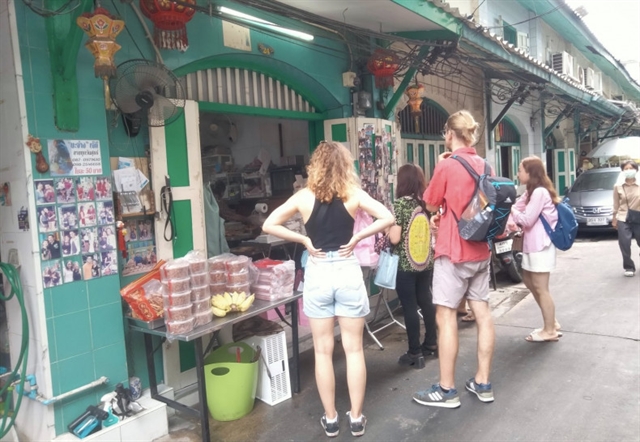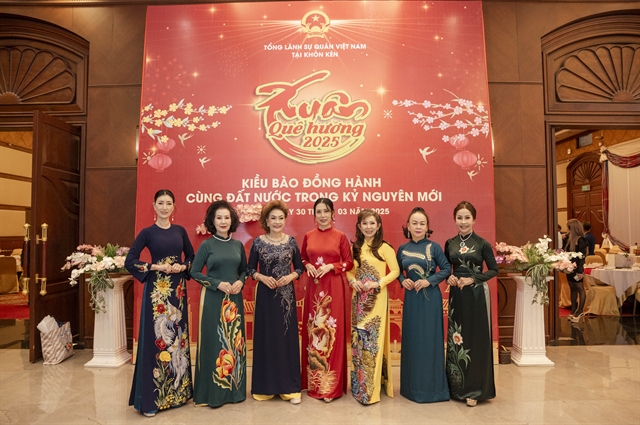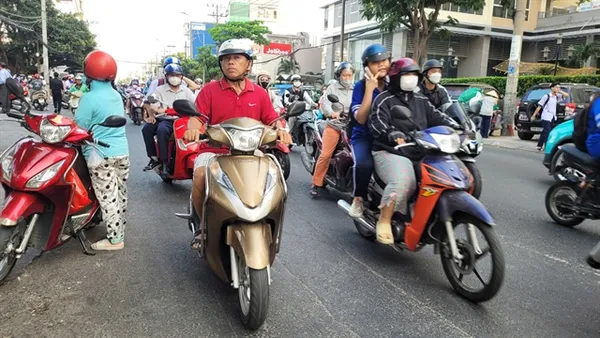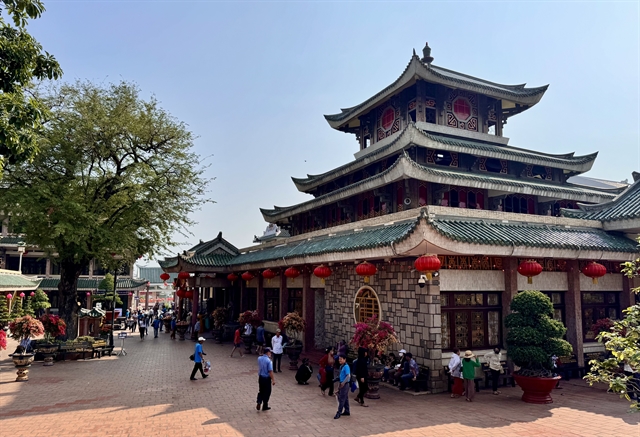 Life & Style
Life & Style

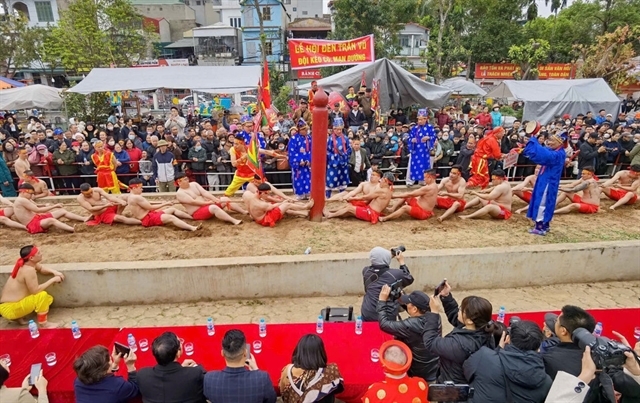 |
| The 'Sitting Tug-of-War' ceremony is held every year on the third day of the third lunar month. VNA/VNS Photo Thanh Tùng |
HÀ NỘI — The 'Seated Tug-of-War' ceremony, recognised as an Intangible Cultural Heritage of Humanity, has taken place at the Trấn Vũ Temple Festival in Thạch Bàn Ward, Long Biên District, in Hà Nội.
The Trấn Vũ Temple Festival is held annually on the third day of the third lunar month, on March 31 this year, showcases traditional cultural identity and serves as a way of the community asking for abundance. It reflects people's reverence for the deities and embodies their dreams and aspirations for a peaceful and prosperous life.
The festival is also a cultural activity arising from human needs, contributing to the solidarity of the nation and fostering a connection to heritage. It serves as a venue for educating future generations about historical and cultural traditions.
Festival-goers have the opportunity to admire the statue of Huyền Thiên Trấn Vũ, a solid bronze sculpture crafted around the 18th century. Standing over four metres tall and weighing more than 4,000 kg, this statue is steeped in legend and closely tied to the nation's history of founding and defending the country. It was recognised as a National Treasure by the government in 2015.
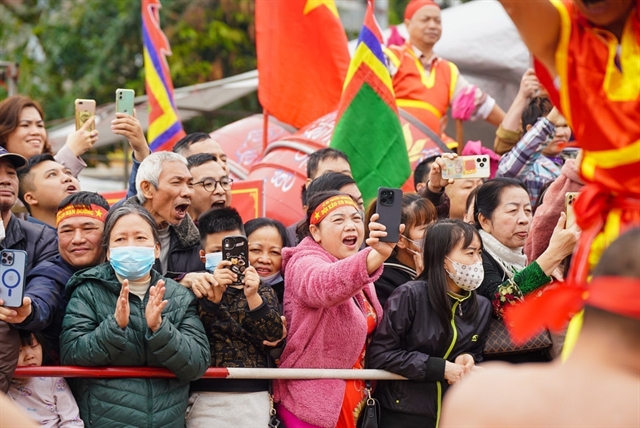 |
| Festival-goers cheer to encourage the teams. VNA/VNS Photo Thanh Tùng |
One of the prominent cultural activities of the Trấn Vũ Temple traditional festival and extremely popular for visitors, is the seated tug-of-war ceremony.
According to historical records, the ceremony is a ritual performance honoring Đức Thánh Linh Lang, the patron saint of Ngọc Trì Village, now part of Thạch Bàn Ward, Long Biên District, Hà Nội.
The uniqueness of this ritual lies in the participants sitting on the ground while pulling - they alternate between sitting with their legs bent and stretched, facing each other across the rope. Through this game and ceremony, the community prays for favourable rain, calm winds and abundant harvests.
Before the festival season, Ngọc Trì villagers select tug-of-war participants, aged 18 to 35, who are local men and must have been born in the village, excluding sons-in-law.
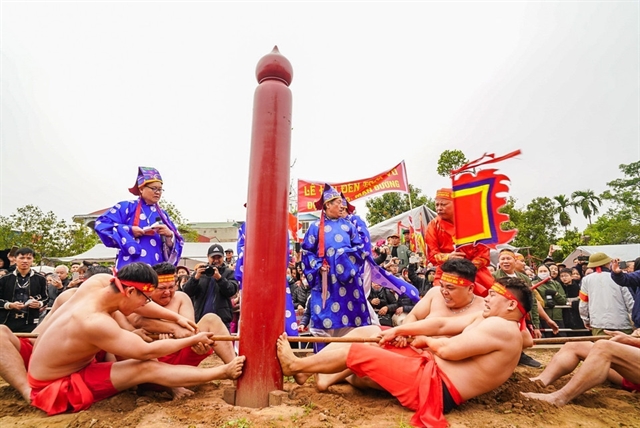 |
| Participants, aged 18 to 35, are local men and must have been born in the village, excluding sons-in-law. VNA/VNS Photo Thanh Tùng |
On the day of the village festival, offerings are presented to the deity Huyền Thiên Trấn Vũ. These include a tray of sticky rice, a pig's head and fruits. The rope used for the tug-of-war is also brought forth and blessed as a tribute, while before the altar of the deity, the representatives of the teams draw lots to select the competing teams.
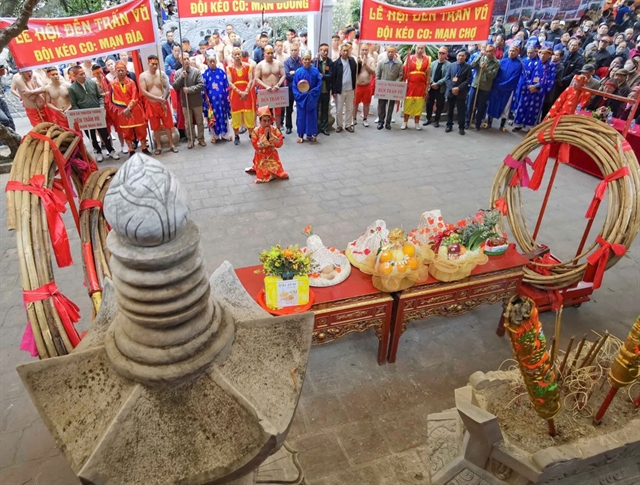 |
| Offerings are presented to the deity Huyền Thiên Trấn Vũ ahead of the game. VNA/VNS Photo Thanh Tùng |
The ceremony at Trấn Vũ Temple was recognised by the Ministry of Culture, Sports, and Tourism as a National Intangible Cultural Heritage in 2014.
In 2015, traditional tug-of-war was recognised by UNESCO as a representative Intangible Cultural Heritage of Humanity under the title 'Ritual and Game of Tug-of-War' jointly submitted by four countries: Cambodia, South Korea, the Philippines and Việt Nam.
According to Việt Nam’s nomination dossier, UNESCO recognised the tug-of-war as a representative Intangible Cultural Heritage of Humanity for four provinces and cities: Lào Cai, Vĩnh Phúc, Bắc Ninh, and Hà Nội. This includes the seated version at the Trấn Vũ Temple in Hà Nội. VNS
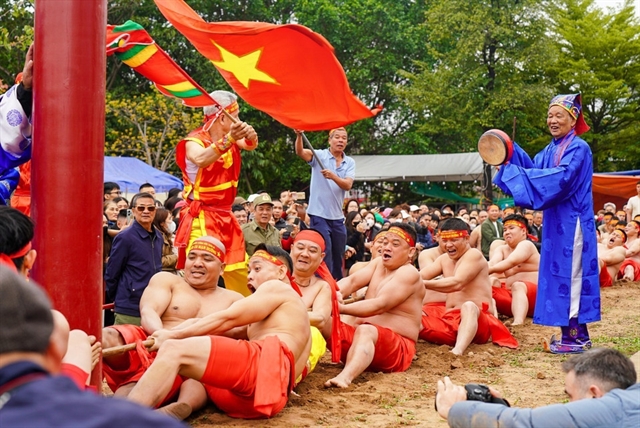 |
| Traditional tug-of-war was recognised by UNESCO as a representative Intangible Cultural Heritage of Humanity in 2015. VNA/VNS Photo Thanh Tùng |


